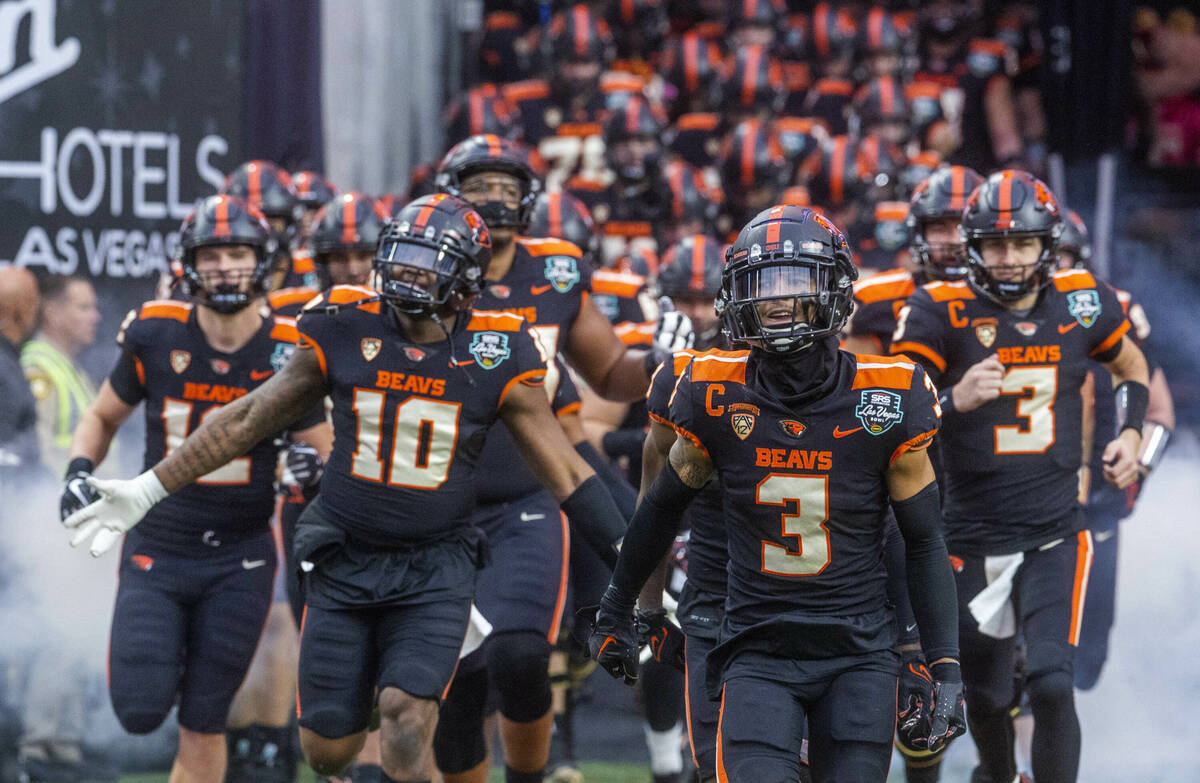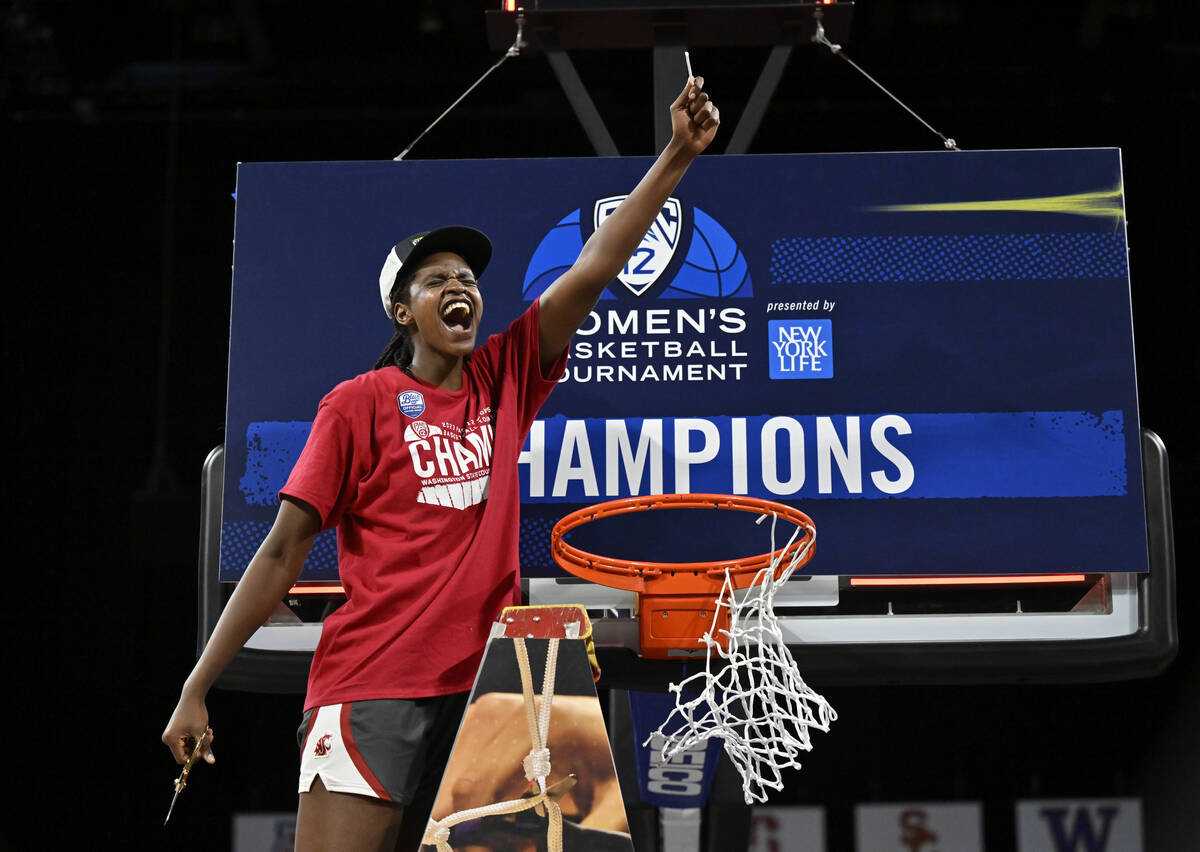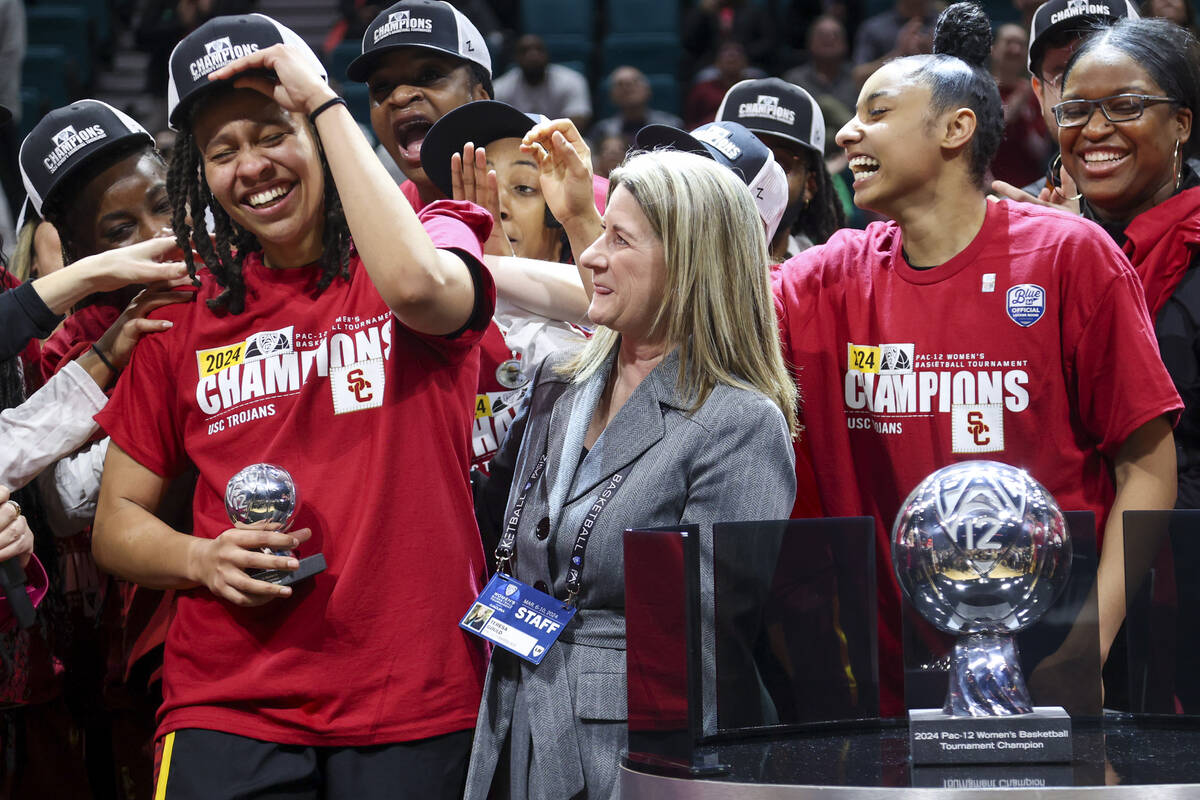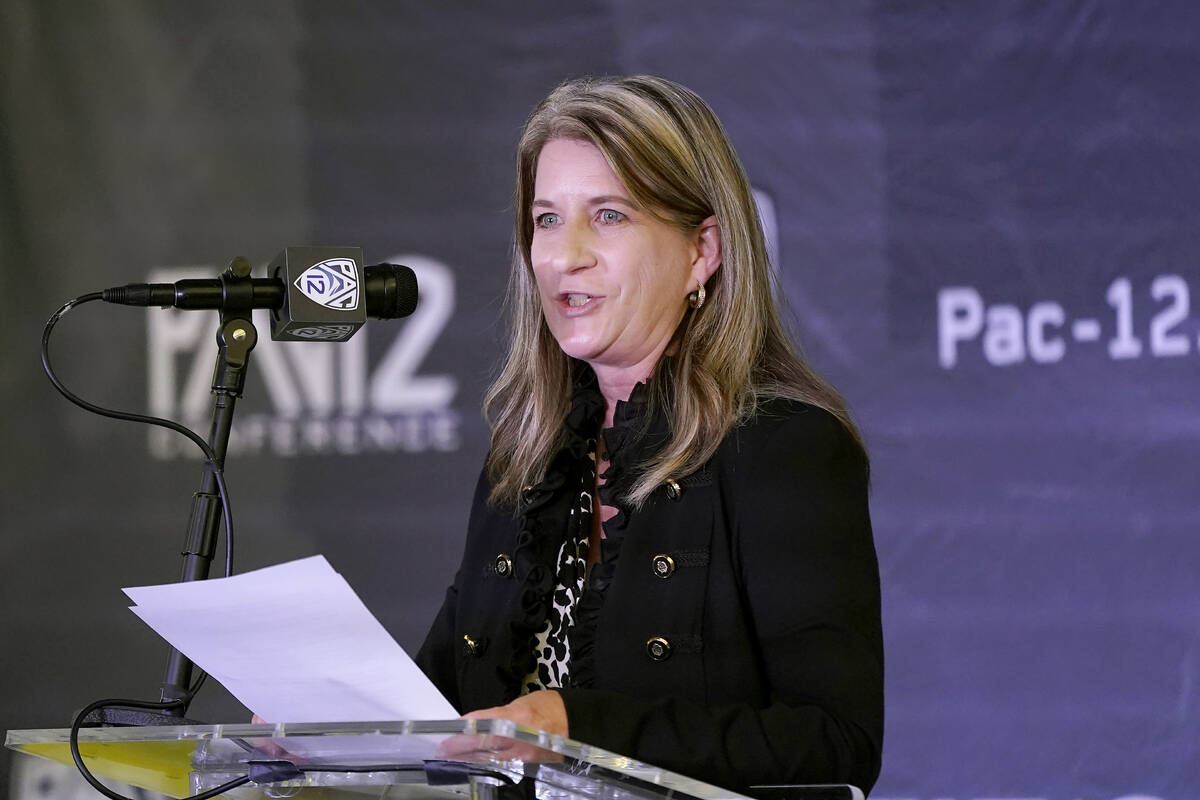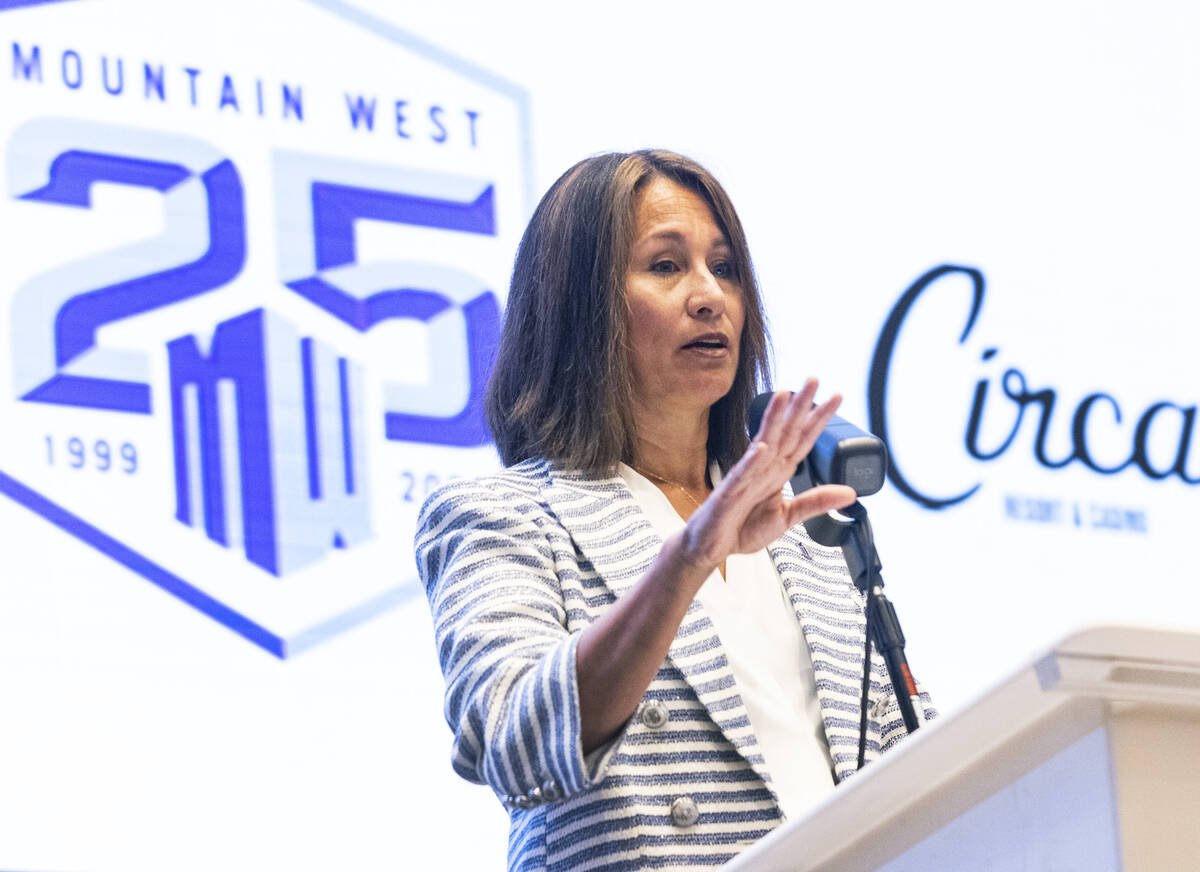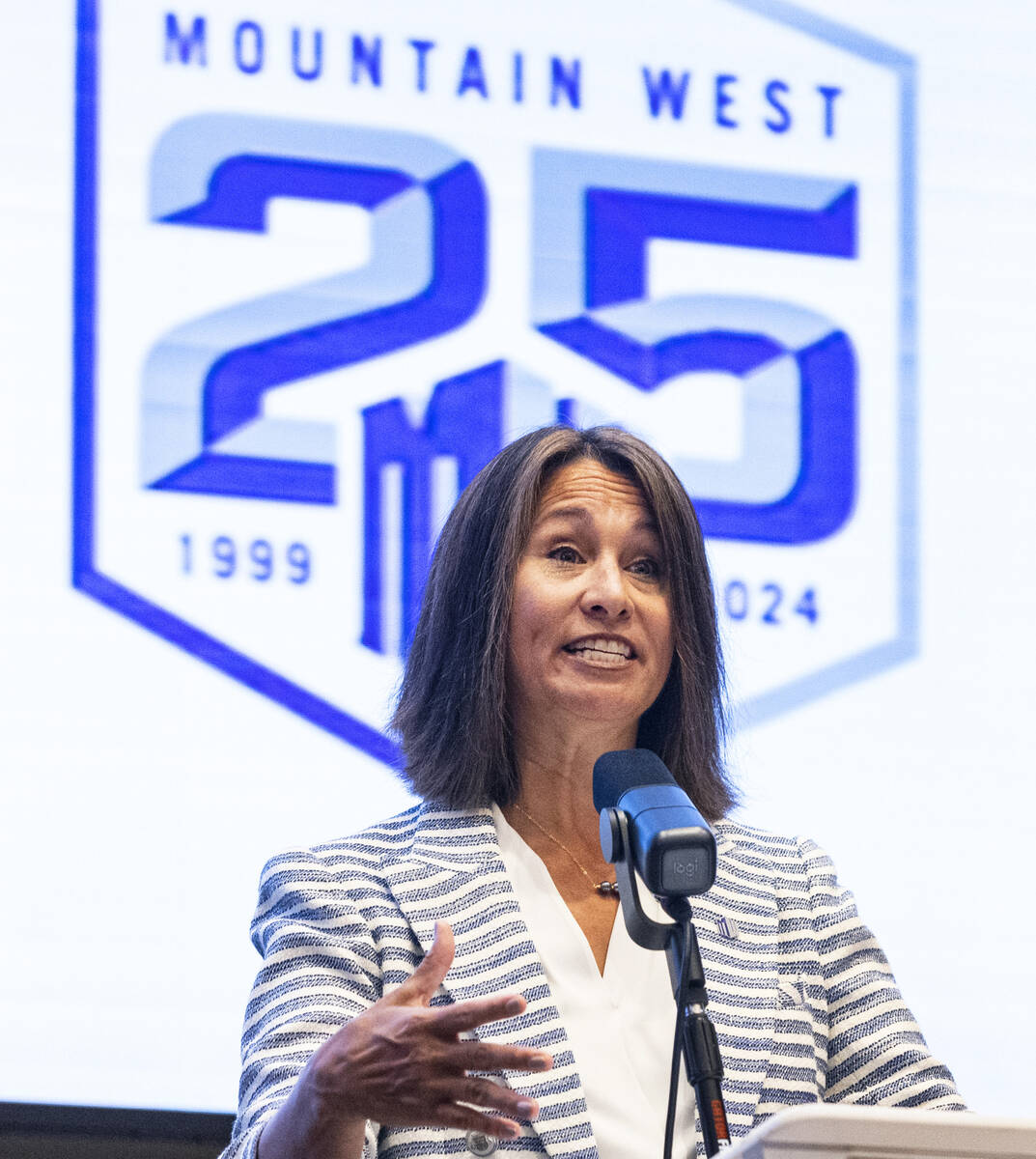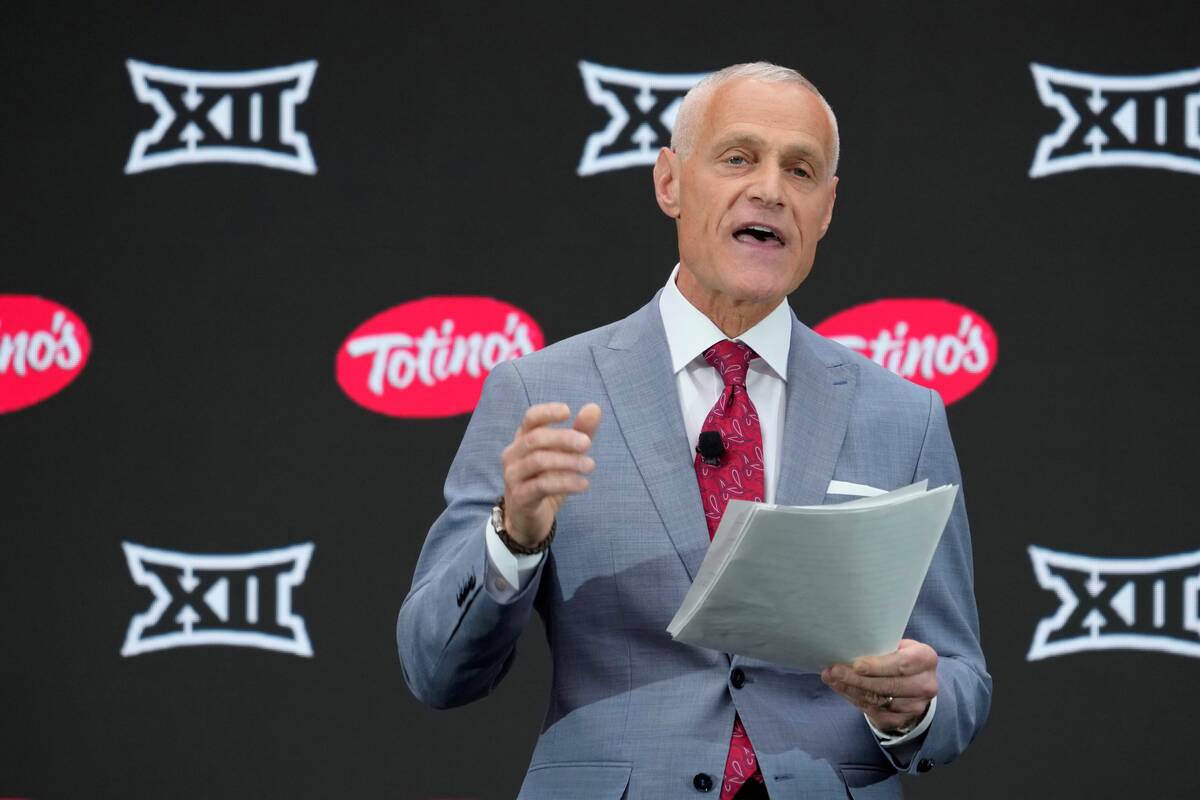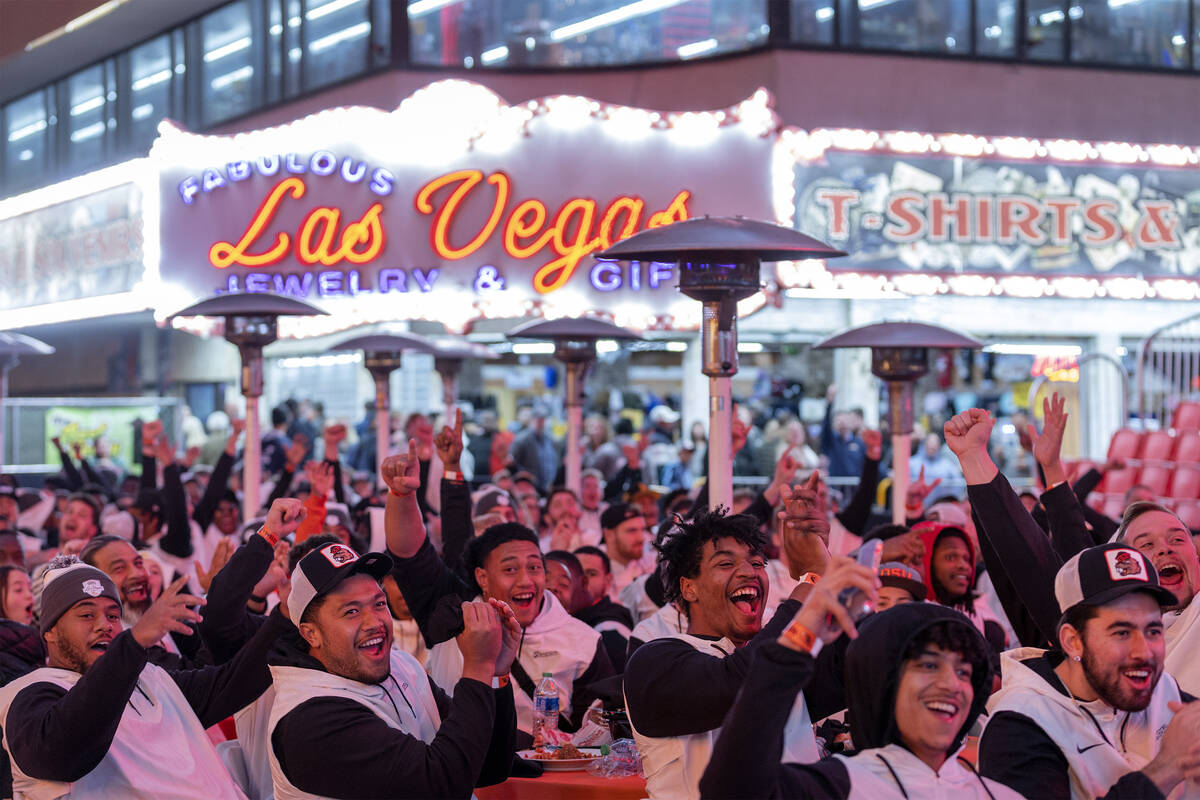Will Pac-12 holdovers make Mountain West home?
Teresa Gould is commissioner of the Pac-12 Conference — which is really a Pac-2 Conference — whose stated goal is to do what’s absolutely best for holdovers Oregon State and Washington State.
Those left behind when the league imploded and all other programs scattered for various Power Five conferences. Those left to fend for themselves.
“I wasn’t hired to rebuild the Pac-12,” said Gould, who assumed her position in March, replacing the departed George Kliavkoff. “I was hired to put these two programs in the best possible position for their long-term success and viability. A Pac-12 rebuild is one option.
“But if it ends up not being the best scenario for them in the long run, we won’t do it. Sustaining and rebuilding the Pac-12 or the Pac-12 brand is not more of a priority than the success of those programs.”
Hello, Mountain West?
It has been widely speculated that the conference of UNLV could simply take on Oregon State and Washington State to secure a 14-team football league by 2026. But adding for the sake of adding might not be in the best interest of the Mountain West.
For now, the Mountain West has a football scheduling agreement for the 2024 season in which all teams will play a game against either Oregon State or Washington State that won’t count toward the conference standings. Conversations have been underway for some time to add a second year onto the agreement. It seems a given at this point.
“We’re open to anything that makes us stronger,” Mountain West commissioner Gloria Nevarez said. “And when we have those conversations, factors can change depending on what day or week or month we’re having.
“It’s always about doing what’s best for the Mountain West going forward and maintaining our (Football Bowl Subdivision) standing and College Football Playoff access and NCAA membership.”
Leverage exists on her league’s side. Boise State’s success in football has helped make the Mountain West perhaps the most robust Group of Five conference. The league will likely compete annually for a spot in the now 12-team College Football Playoff.
The Mountain West wouldn’t need Oregon State and Washington State to continue that quest. It wouldn’t need them to promote the idea of having a seat at the main table.
No poaching
There are also certain fines to be considered. Mountain West schools that would leave for, say, the Pac-12, would be held to exit fees. It’s $18 million for a one-year notice of departure and $36 million for less than a year.
There is also a poaching penalty for the Pac-12 that is tied to the football scheduling agreement — $10 million for every school that would jump to that conference.
It’s just not as simple as designing a merger of the Pac-12 by rebuilding itself with certain Mountain West members. There’s a lot more to it than that.
“It was no fun what we went through,” Washington State athletic director Anne McCoy said. “We just want to be in the best position possible for the future, something that feels stable and right. Whether that’s rebuilding the Pac-12 or other things being discussed. Control what we can control, but keep ourselves in the public eye.”
Whatever occurs, it should happen fairly quickly.
Oregon State and Washington State have been granted a two-year NCAA grace period for conferences falling below the eight-member minimum, and each institution says it would like a much clearer picture of the future by the spring of 2025.
For its part, the Mountain West is considering all scenarios. Nevarez at the league’s annual football media days spoke about how the league adopted “threatcasting,” a model that envisions future threats and specific actions that can be taken to disrupt them.
“This was a (conference) presidential initiative in order to help position ourselves in this new environment,” Nevarez told reporters. “This is how we plan to survive and thrive in the myriad of potential outcomes that are coming our way. We are very involved in constantly thinking about the Mountain West, how to remain competitive and how to think about the future.”
What that holds in terms of Oregon State and Washington State is anyone’s guess right now. Nevarez and Gould are convinced realignment across the country is far from over.
What does that mean, then, for a program such as UNLV?
Big 12 arrival
Brett Yormark is commissioner of the Big 12, which held its football media days at Allegiant Stadium for the first time in July. The conference welcomed, among others, new members Arizona, Arizona State, Colorado and Utah from the Pac-12.
“I don’t have a crystal ball on expansion or realignment,” Yormark said. “Right now, I’m focused on the 16 teams we have. We’re grown this conference by 60 percent in less than two years. How do we become the best version of ourselves with the 16 we have?”
On Friday, ESPN cited sources in reporting the Big 12 is in talks with Connecticut about joining the league in all sports,
“Las Vegas as (a city) is very high on the list for us,” Yormark continued. “That’s why we’re here. It’s the Entertainment and Sports Capital of the world. I’ve wanted us to be in Las Vegas for all the right reasons. Now we’re here and glad we are. This is a very important market for us.”
So the narrative remains the same. Everyone wants to be in Southern Nevada.
But does anyone in the power world want the Rebels?
UNLV, with its improved football program and facilities and place in a now professional sports town, would seem in good position to be among those schools the Pac-12 would seek if it indeed chases others.
The major key is never getting left behind. More and more, it seems that’s no longer a worry for the Rebels should Mountain West teams look elsewhere.
“I’ve always said the most important part is focusing and taking care of home,” UNLV athletic director Erick Harper said. “I think we’ve done that. We play in a $2 billion Allegiant Stadium. We have the $35 million Fertitta Football Complex. We’ve got a football coach (in Barry Odom) who had one heck of a first year. We’ve recruited well.
“There is a lot of interest going on with our football program, a lot of visibility on the city of Las Vegas.”
Harper says it’s all about branding. That remaining good in football — UNLV won nine games last season, its most since 1984 — is essential to remaining relative. That having 11 nationally televised games this season will only enhance such a truth.
“It’s basically a four-hour television commercial for UNLV,” he said.
So they forge ahead like all Mountain West schools, unsure of the future but content for now in what seems to be a solid conference amid all the movement across college athletics.
Different options
Things always seem to be in flux, no?
“When I first started in this business, I was never worried about schools leaving,” Nevarez said. “Now, it’s our every day. It’s something we think about a lot. But, again, we have really good relationships with our schools to the best I can. We have open, transparent dialogues so we’re not caught off guard by anything. That’s my approach to it.”
Things are bound to happen.
Will the Mountain West absorb Oregon State and Washington State?
Will the Pac-12 try and rebuild with Mountain West teams?
Those and other options are on the table.
Which means things could look dramatically different come 2026.
Which means stay tuned.
Contact Ed Graney at egraney@reviewjournal.com. Follow @edgraney on X.




